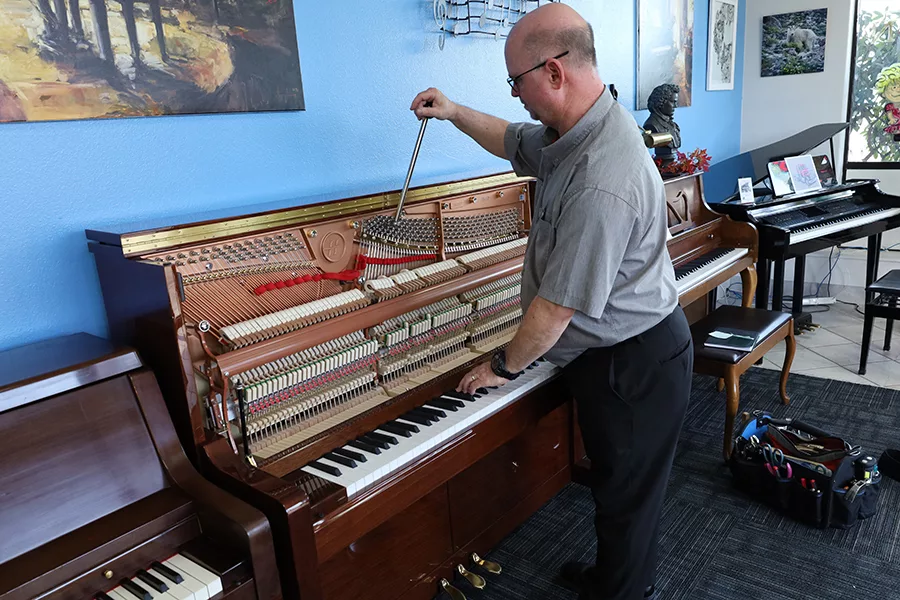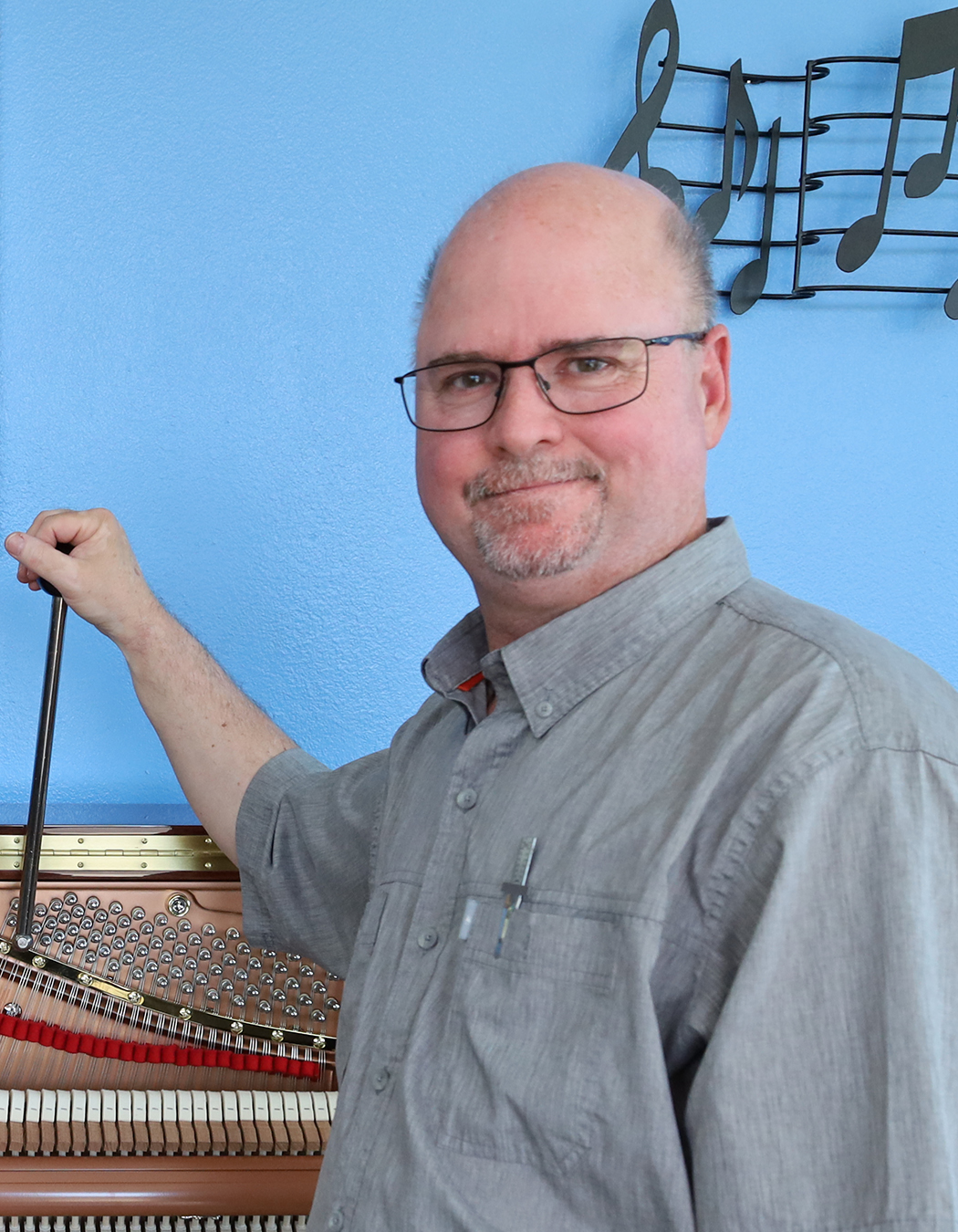
Home » Meet the man who’s tuned Tri-City pianos for 24 years
For the love of mechanics and music
Meet the man who’s tuned Tri-City pianos for 24 years

Randy Hansen, owner of Hansen Piano, tunes a piano at Ebony & Ivory Pianos LLC in Richland. He has been tuning pianos since 2000.
Photo by Rachel VisickApril 15, 2024
In 1999, Randy Hansen picked up a book he could not put down.
It turned out to be a book that would change his life.
After reading “Piano Servicing, Tuning and Rebuilding” by Arthur Reblitz, he enrolled in the Randy Potter School of Piano Technology in Bend, Oregon.
“It was like a calling, I had to do this,” Hansen said.

Randy Hansen
Piano tuning combines Hansen’s two loves: mechanics and music.
His father was a professional guitarist, and while Hansen never learned to play, he did learn to tune. Listening “got the tuning bug in my ear,” he said.
He launched his own business, Hansen Piano, in 2000, and has been tuning pianos ever since.
“I fell in love with doing it. I couldn’t stop doing it,” he said.
Hansen spent six years working two jobs until he could launch his business full time.
Now, he services two to three pianos every day, and he does business in a wide area encompassing the Tri-Cities, Wenatchee, Moses Lake and Yakima, as well as the Oregon communities of Pendleton, Irrigon and La Grande.
The mechanics of tuning
A typical tuning session involves testing the pedals and playing every note.
Then Hansen lifts the lid.
“What I’m amazed is how many people have not actually looked in their piano before, or seen how many intricate parts there are,” he said.
While tuning, Hansen keeps track of all the small parts of the piano and the small tools he uses to adjust them.
Over the years, he has recovered a number of odd items from inside the pianos, including a gold necklace, old coins, a Nokia cellphone and a Lego Darth Vader.
Hansen uses a tuning hammer to move the tuning pin, which in turn tightens or loosens the piano wires.
This process can take a long time to learn and develop, Hansen said.
The incremental movements put a strain on the muscles, especially if a piano’s tuning pins are tight. The instruments can hold 18 tons of pressure, he said.
“You’re going to start getting sore,” Hansen said. “And if that happens, then you’re doing it right.”
Hansen uses the same process on each piano but “some pianos are easy to work with, some of them you have to fight with.” Each has its own personality, he said.
Tuning by ear
It’s important to Hansen that he tunes the old-fashioned way, by ear, and not with electronic tuners.
He’s learned from members of the Piano Technicians Guild, which he joined in 2005, and other experienced craftsmen.
Tuning by ear means listening to “the rate of the (string’s) vibration per second” and then making adjustments.
Hansen also listens for the partials, or harmonics, within a note. This is a little different than tuning for pitch. Tuning to a strict value ignores these harmonics, and the piano won’t sound right, he said.
Instead, Hansen considers how the notes will sound together. He demonstrated by holding down one key and playing other notes in a sequence.
Those other notes resonated the original strings. This is because when a piano string vibrates, it creates waves. One full wave is the fundamental tone, or the specific note played. However, several different waves occur while a string is vibrating, creating different tones – the partials.
Hansen also must tune for unison. Many notes on the piano have two or three strings, so part of the process is making sure those strings are tuned to each other.
Piano maintenance
Hansen said pianos should be tuned at least once a year, and many manufacturers suggest twice per year. New pianos may need to be tuned more often as they settle in.
Hansen noted that it’s important for students to learn on a regularly tuned piano since the brain remembers pitch.
Pianos serviced every year usually take Hansen between 1.5 and 2 hours to tune, but when they have been neglected, they need more time.
Weather can affect a piano’s soundboard, which changes with fluctuations in humidity and temperature. A piano’s sound can fall flat when heaters run without humidifiers and can end up on the sharp side in wet seasons.
Hansen Piano charges $125 to $150 for instruments that have been tuned yearly, and $150 to $250 for new clients and neglected pianos.
It’s a sad day when Hansen must condemn a piano, but “pianos have graveyards, too.”
Happier are the times when he has finished tuning and can listen to pianists play.
“Part of the joy is music makes people happy,” he said.
“Being a part of someone’s happiness … it makes me happy in a way.”
Hansen Piano: Call or text: 509-430-0998; hansenpiano.com.
Latest News Business Profiles
KEYWORDS April 2024
Related Articles





